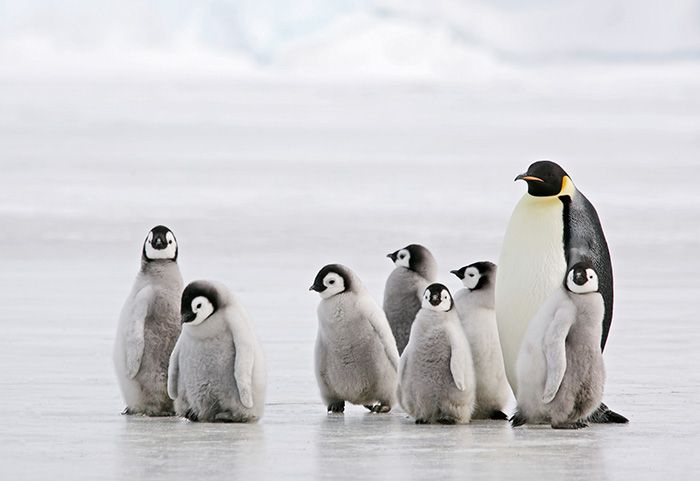Satellite images have discovered 11 new colonies of Emperor penguins in the Antarctic that had previously never been discovered. The discovery means that the number of known colonies of the threatened species has been boosted by 20% - growing the population of Emperor penguins to more than half a million, with 61 colonies around the continent.
SEE THE PICS: Britain's oldest penguin celebrates her 30th birthday
Emperor penguins call Antarctica home
For the last 10 years, British Antarctic Survey (BAS) scientists have been looking for new colonies by searching for their guano stains on the ice. "This is an exciting discovery," said lead author Dr Peter Fretwell. "The new satellite images of Antarctica’s coastline have enabled us to find these new colonies. And whilst this is good news, the colonies are small and so only take the overall population count up by 5-10% to just over half a million penguins or around 265,500 – 278,500 breeding pairs."
WATCH: Penguins enjoy their brand new toy - a bubble machine
Emperor penguins need sea ice to breed and are often found in remote, inaccessible areas with temperatures as low as -50C – making them hard to study. As they are the only penguins to breed on sea ice, rather than land, they are more vulnerable to the effects of climate change.
READ MORE: The Arctic's largest ozone hole heals itself
The researchers found all of the new colonies were in areas offshore, on sea ice that had formed around icebergs that had grounded in shallow water – making them particularly at risk from the effects of climate change.
Dr Phil Trathan, Head of Conservation Biology at BAS, who has been studying penguins for the last three decades, said: "Whilst it’s good news that we've found these new colonies, the breeding sites are all in locations where recent model projections suggest emperors will decline. Birds in these sites are therefore probably the 'canaries in the coalmine' – we need to watch these sites carefully as climate change will affect this region."











